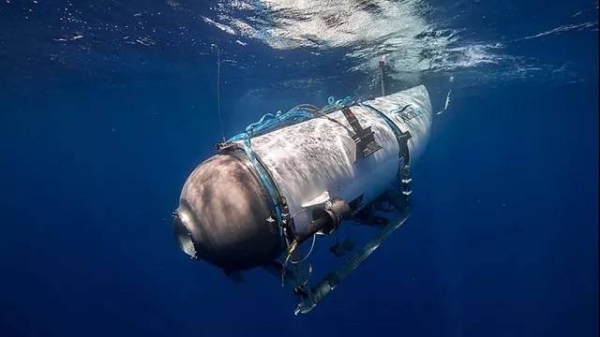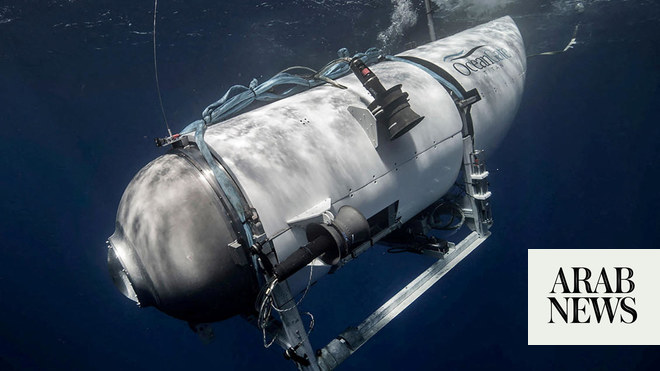
Oxygen supplies onboard the missing sub might only have lasted until Thursday at noon — in a best case scenario.
Hope is fading for five people on board a submersible that vanished on Sunday, as oxygen supplies are predicted to have run out.
Ships from around Europe have joined efforts to find the Titan, which disappeared near the Titanic"s wreck in the Atlantic Ocean, with rescuers desperately searching for the vessel.
Aircraft, boats and remotely operated vehicles expanded their search for the five crew members on board, after "banging" noises were heard underwater on Wednesday.
They are combing an area of 26,000 sq km.
"We have to remain optimistic and hopeful when you"re in a search and rescue case, said Captain Jamie Frederick, coordinator of the coast guard"s response.
"We"re right in the middle of the search and rescue case. I don"t want to get into a discussion about when that would end."
A Norweigan boat, equipped with autonomous underwater robots, and another vessel from France are scouring the Titan"s last known location, some 700 km off the coast of Newfoundland, Canada.
Even if the sub is located, it could be nearly impossible to reach as it may be stuck roughly 3,800 m below on the seafloor.
The US Coast Guard, which is leading the complex operation, relocated its rescue efforts as a result of detecting the sounds, but so far has "yielded negative results".
Experts estimate the vessel will run out of oxygen Thursday morning.
Canadian authorities reported the carbon-fibre vessel missing late on Sunday night, sparking an international rescue effort.
Aboard were a pilot, a renowned British adventurer, two members of a Pakistani business family and a Titanic expert.
They were on a tourist visit to the wreck of the ill-fated ship.
Titan had a 96-hour oxygen supply when it set off at roughly 6 a.m. on Sunday, according to David Concannon, an adviser to OceanGate Expeditions, which oversaw the mission.
Journalist David Pogue, who went on an expedition to the Titanic aboard the Titan last year, said the vessel uses two communication systems: text messages that go back and forth to a surface ship and safety pings that are emitted every 15 minutes to indicate that the sub is still working.
Both of those systems stopped about an hour and 45 minutes after the vessel was submerged.
"There are only two things that could mean. Either they lost all power or the ship developed a hull breach and it imploded instantly. Both of those are devastatingly hopeless,” Pogue said on Tuesday.
Experts said the rescuers face steep challenges.
Alistair Greig, a professor of marine engineering at University College London, said submersibles typically have a drop weight, which is “a mass they can release in case of an emergency to bring them up to the surface using buoyancy.”
“If there was a power failure and/or communication failure, this might have happened, and the submersible would then be bobbing about on the surface waiting to be found,” he said.
Another scenario is a leak in the pressure hull, in which case the prognosis is not good, he said.
“If it has gone down to the seabed and can’t get back up under its own power, options are very limited,” Greig said. “While the submersible might still be intact if it is beyond the continental shelf, there are very few vessels that can get that deep, and certainly not divers.”
Even if they could go that deep, he doubts rescuers could attach to the submersible.
The Canadian research icebreaker Polar Prince, which was supporting the Titan, was to continue conducting surface searches with help from a Canadian Boeing P-8 Poseidon reconnaissance aircraft, the Coast Guard said on Twitter.
Two US Lockheed C-130 Hercules aircraft also conducted overflights.
The Canadian military has dropped sonar buoys to listen for any possible sounds from the Titan.
OceanGate’s expeditions to the Titanic wreck site include archaeologists and marine biologists. The company also brings people who pay €230,000 to come along, known as “mission specialists.”
They take turns operating sonar equipment and performing other tasks in the submersible.
The Coast Guard said Monday that the Titan carried a pilot and four “mission specialists." However, OceanGate"s website suggests that the fifth person may be a so-called “content expert” who guides the paying customers.
The Titanic wreck lies 3,800 meters down at the bottom of the Atlantic, 400 nautical miles off the coast of Canada.
It sunk in April 1912 after striking an iceberg on its maiden voyage. Of the 2,200 people onboard, just 706 survived.
The wreck was discovered in 1985. A large amount of debris surrounds the destroyed ship.
In recent years, small submersibles have started taking tourists to visit.
OceanGate"s first dive happened in 2021, says the company on its website.
Each of its expeditions is supposed to have a scientific objective, with each dive taking eight hours from top to bottom. — Euronews












